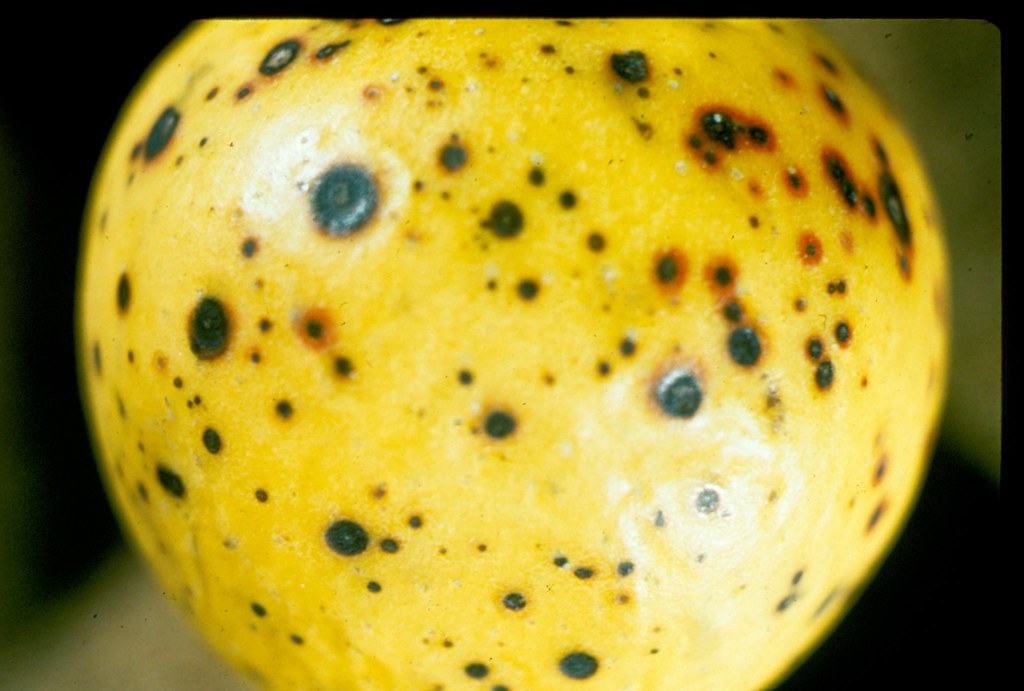Black pox is a fungus disease caused by Helminthosporium papulosum. It is considered to be of minor economic importance. When it occurs, the disease can affect apple bark, fruit, and foliage. It is more common from southern Virginia southward than in the northern mid-Atlantic region. The same fungus causes blister canker on pear.
Infection first appears on current season twigs as well-defined, conical, shiny black lesions, which enlarge by the end of the first season. Extensive secondary lesion enlargement may girdle small, heavily infected twigs. Smooth-barked twigs remain susceptible for several years, and twig infection is cumulative throughout this period. Twig symptoms may be confused with the nutritional disorders measles and internal bark necrosis. Fruit lesions are small, black, circular, and slightly sunken (fig. 1). Leaf lesions begin as red halos with light green centers and become tan to brown with purple borders. Severe leaf infection may cause defoliation. Differences in cultivar susceptibility have been noted, with ‘Rome Beauty’ and ‘Grimes Golden’ being more susceptible than ‘Yellow Transparent’ and ‘York Imperial’.
| Figure 1. Black pox lesions on fruit. Photo: Collection of A. B. Groves, Virginia Tech. |
|---|
 |
This wet-weather fungus overwinters and produces conidia in old bark lesions. The optimum temperature for growth is 82°F. Leaf infections may become evident in midsummer, fruit and stem lesions slightly later. The incubation period is 3 to 6 months on fruit and 3 to 10 months on bark. If fruit is harvested relatively early in the season, infection may occur after the last preharvest fungicide application, allowing spread of the disease to unprotected new growth and new trees.
To help prevent spread of the disease, use disease-free planting stock. Most fungicides used in the cover sprays at 14-day intervals for summer diseases control black pox. On early-maturing apple cultivars, you may need to use post-harvest sprays to reduce the buildup of the disease on leaves and twigs after harvest.
Resource
http://www.caf.wvu.edu/kearneysville/disease_descriptions/omblpox.html
Adapted by Alan R. Biggs, West Virginia University.
Original text prepared by K. S. Yoder. The original version of this article appeared in The Mid-Atlantic Orchard Monitoring Guide (NRAES-75) and is reproduced with permission from the Natural Resource, Agriculture, and Engineering Service, Cooperative Extension, 152 Riley-Robb Hall, Ithaca, New York 14853-5701, U.S.A. (607) 255-7654.
